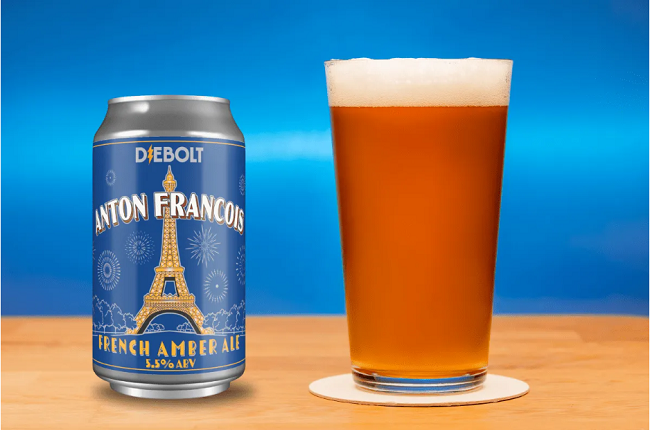
Amber ale is a beer style that combines both malt sweetness and hop bitterness to create a balanced and satisfying drink. However, have you ever wondered what gives amber ale its sweet flavor? In this article, we will explore five surprising secrets that contribute to the distinctive sweetness of amber ale. Whether you’re an aspiring homebrewer, a craft beer enthusiast, or just a curious consumer, understanding these secrets will give you a greater appreciation for amber ale and its unique flavor profile.
The Basics: What is Amber Ale?
Amber ale is a medium-bodied beer with a characteristic amber to reddish-brown color. It typically falls between lighter lagers and darker ales, providing a pleasant balance of malt sweetness and hop bitterness. Amber ale is often brewed using a mix of malted barley varieties, which impart flavors ranging from caramel and toffee to bready and toasty notes. The beer’s relatively moderate hop bitterness prevents it from becoming overly sweet, making it an approachable and versatile choice for many beer drinkers.
But what is it about amber ale that makes it taste so sweet? Let’s break it down.
Secret #1: The Role of Malts in Amber Ale’s Sweetness
The primary source of sweetness in amber ale comes from the malt. When barley is malted, it undergoes a process that transforms the starches into fermentable sugars. These sugars are crucial for both the fermentation process and the sweetness in the final beer. The specific types of malts used in brewing amber ale play a major role in creating that signature sweet flavor.
Caramel and Crystal Malts
Caramel and crystal malts are often used in amber ales to provide depth and sweetness. These malts are specially processed to enhance their sugar content, which is released during the brewing process. When caramelized, these malts develop a rich, sweet flavor, contributing to the overall sweetness of the beer.
- Caramel Malts: These malts are heated to a high temperature, allowing sugars to caramelize. This process adds a sweet, toasty, and slightly nutty flavor to the beer.
- Crystal Malts: These are a type of caramel malt that undergoes a different process. Crystal malts add a syrupy sweetness and help create a full-bodied mouthfeel.
These malts are usually used in varying proportions to give amber ale its signature rich flavor.
Munich and Vienna Malts
Munich and Vienna malts are also frequently used in amber ales. These malts have a toasted flavor profile and add sweetness through their maltiness, making the beer feel fuller and more rounded. They contribute a bready, biscuity sweetness that balances the caramel malts’ more intense sugar flavors.
Secret #2: The Influence of Yeast in Amber Ale’s Sweetness
While malts are the primary source of sweetness in amber ale, yeast also plays a significant role in determining the final flavor. Yeast is responsible for fermentation, where it consumes sugars and produces alcohol and carbon dioxide. However, different yeast strains produce different levels of sweetness depending on how much sugar is left behind after fermentation.
Yeast Strains and Their Effect on Sweetness
- Ale Yeast: The most common yeast used in amber ales is ale yeast. Ale yeasts tend to leave behind more residual sugar than lager yeasts. This means that amber ales brewed with ale yeast will often have a slightly sweeter finish.
- Fermentation Temperature: The temperature at which fermentation occurs can also influence the sweetness of the beer. Higher fermentation temperatures can cause yeast to consume sugars faster, resulting in a drier beer with less residual sweetness. Lower temperatures allow the yeast to work more slowly, which can leave behind more sugars and thus more sweetness.
By selecting a specific yeast strain and controlling fermentation temperatures, brewers can fine-tune the sweetness levels of amber ale to suit their preferences.
Secret #3: The Role of Hops in Balancing Sweetness
While hops are typically associated with bitterness, they also play an important role in balancing the sweetness of amber ale. Without hops, the beer could become overly sweet and one-dimensional. Hops are added to beer to impart bitterness, which counteracts the sweetness from the malt and creates a more harmonious and balanced beer.
However, hops also bring subtle flavor notes that complement the beer’s sweetness:
Types of Hops Used in Amber Ale
- Fuggle and East Kent Goldings: These classic British hop varieties are known for their earthy, herbal flavors. They provide a mild bitterness that balances the sweetness of the malt without overwhelming it.
- Cascade and Citra: These American hop varieties add bright, citrusy, and floral notes to amber ale. While they contribute bitterness, they also help enhance the overall complexity of the beer’s flavor, making it more interesting and multidimensional.
By adjusting the type and amount of hops used in brewing, brewers can fine-tune the balance between sweetness and bitterness in amber ale.
Secret #4: Water Profile and Its Impact on Sweetness
Water is another essential ingredient in amber ale brewing. While often overlooked, the mineral content of water can have a significant impact on the final taste of the beer. Minerals like calcium, chloride, and sulfate affect how sweetness and bitterness are perceived on the palate.
How Water Affects Sweetness
- Calcium: Calcium helps with the clarity and stability of beer, but it can also enhance malt sweetness by rounding out the flavor and accentuating smoothness.
- Chloride: Chloride, present in higher concentrations, tends to enhance malt sweetness, making the beer feel fuller and sweeter on the tongue.
- Sulfate: Sulfate emphasizes hop bitterness and can make the beer feel drier, potentially diminishing the perception of sweetness.
Brewers can manipulate the water’s mineral profile to accentuate sweetness and create a beer that meets their desired flavor profile.
Secret #5: Aging Amber Ale for Enhanced Sweetness
The aging process can also contribute to the sweetness of amber ale. As beer ages, its flavors evolve, and the residual sugars continue to interact with the other compounds in the beer. Over time, this process can soften sharp flavors and bring out more rounded, mellow sweetness.
Barrel Aging and Sweetness
When amber ale is aged in wooden barrels, it can pick up flavors from the wood itself, which often include vanilla, caramel, and oak. These flavors can enhance the beer’s sweetness and add a layer of complexity that is not present in freshly brewed beer.
Extended Aging
If amber ale is aged for longer periods, the sweetness may mellow out as the beer’s sugars continue to break down and integrate. This results in a smoother, more balanced flavor that’s still sweet but less overpowering.
Some brewers also experiment with different aging techniques to create unique variations of amber ale, enhancing its sweetness through time.
How to Maximize Amber Ale’s Sweet Flavor
If you want to brew an amber ale that highlights its sweetness, here are some tips to follow:
- Use a Blend of Malts: Incorporate caramel, crystal, and Munich malts for a complex and rich sweetness.
- Choose the Right Yeast: Opt for an ale yeast strain that leaves behind more residual sugar for a sweeter finish.
- Balance with Hops: Don’t overdo the hops. Use them to balance the malt sweetness and prevent the beer from becoming too sweet.
- Manipulate Water Profile: Adjust your water’s mineral content to enhance the sweetness and round out the beer’s flavor.
- Consider Aging: Barrel aging or extended aging can bring out deeper layers of sweetness and complexity in your amber ale.
By following these tips, you can craft an amber ale that is perfectly sweet and balanced.
Amber Ale Flavor Profile
The amber ale flavor profile offers a balanced mix of malt sweetness and hop bitterness. Known for its medium body, it showcases sweet caramel, toffee, and toasted malt notes. The amber ale flavor profile is often described as smooth and slightly sweet, with a noticeable malt presence. This is due to the use of crystal malts, which give the beer its characteristic sweetness. The malt sweetness is balanced by a moderate hop bitterness, providing a refreshing finish without overwhelming the palate. To fully appreciate the amber ale flavor profile, it’s important to consider the brewing process and ingredients, which contribute significantly to the beer’s overall taste. For more on flavor profiles, check out Coalition Brewing’s detailed guide.
Amber Ale Sweetness
The amber ale sweetness primarily comes from the malts used during brewing, especially caramel and crystal malts. These malts are rich in sugar, which adds a smooth, sweet flavor that balances the beer’s hop bitterness. The amber ale sweetness can vary in intensity depending on the brewing process and the proportions of malt and hops used. In many amber ales, the sweetness is complemented by notes of caramel, toffee, and even a light toasted flavor. Understanding the amber ale sweetness helps beer enthusiasts appreciate the beer’s complexity, as the sweetness is integral to the beer’s overall balance.
Amber Ale Malt Sweetness
The amber ale malt sweetness is a key component of its flavor, with malted barley playing a significant role in creating the beer’s rich, sweet taste. This sweetness often stems from the use of special malts like crystal malt, which has a high sugar content. These malts contribute to the amber ale malt sweetness by adding caramel and toffee flavors that are prominent in the beer’s profile. The combination of these malts and a careful brewing process creates a beer that is not overly sweet but still rich enough to be satisfying.
FAQ: What Gives Amber Ale Its Sweet Flavor?
Q1: What types of malt are used in amber ale to make it sweet?
A: Caramel, crystal, Munich, and Vienna malts are commonly used to impart sweetness in amber ales.
Q2: Does yeast affect the sweetness of amber ale?
A: Yes, yeast strains like ale yeast leave behind more residual sugars, contributing to the beer’s sweetness.
Q3: Can hops make amber ale taste sweeter?
A: While hops add bitterness, they balance the sweetness in amber ale, preventing it from being overly sweet.
Q4: How does water affect the sweetness of amber ale?
A: Water’s mineral content, especially calcium and chloride, can enhance malt sweetness and create a fuller mouthfeel.
Q5: How does aging amber ale influence its sweetness?
A: Aging amber ale in barrels or for extended periods can bring out smoother, more rounded sweetness and add complexity.
Conclusion
In conclusion, the secret behind what gives amber ale its sweet flavor lies in the interplay of several factors, including the choice of malts, the type of yeast used, the balance of hops, water profile, and the aging process. Each of these elements contributes to the beer’s signature sweet and balanced flavor. By understanding these elements, both brewers and beer drinkers can appreciate the complexity and craftsmanship involved in creating this beloved beer style.
If you want to dive deeper into the complexities of flavors and twists, check out the A Court of Mist and Fury Summary. With its unique story, it’s a reminder that both beer and literature share the ability to surprise and delight.
You May Also Like:
Excuse Me, This is My Room: 7 Key Lessons and Surprising Twists







